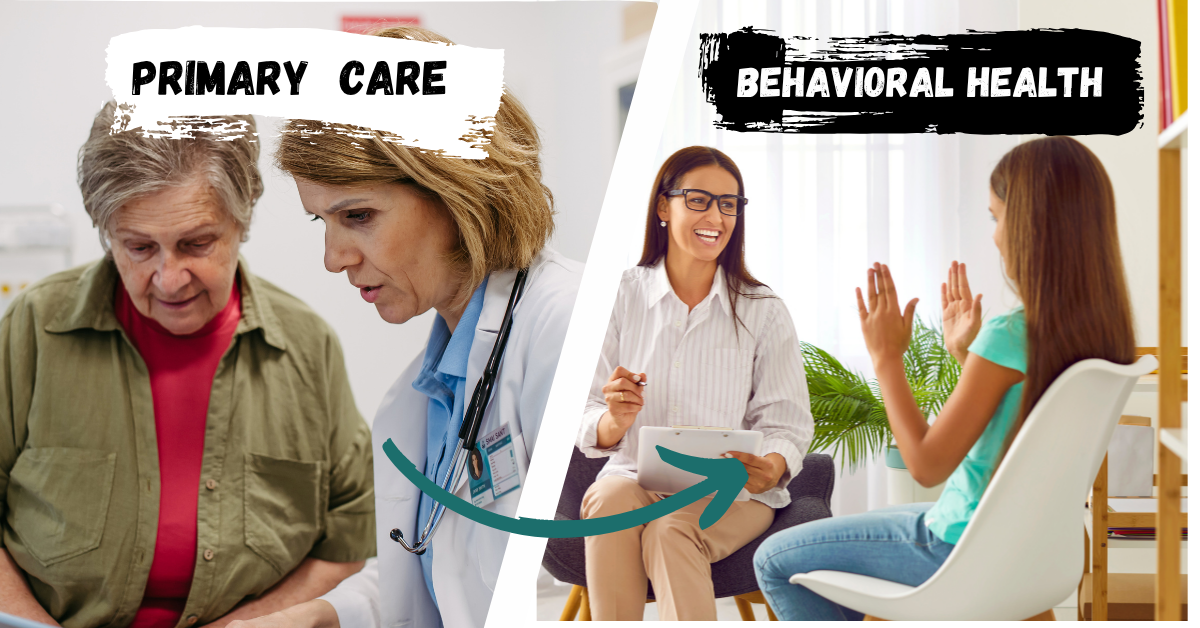The Behavioral Health Gap: Why Integration Can't Wait Until 2026
Building on Our Last Conversation
In our recent post, we showed how promising models can stall without sustained funding and leadership. Today, we’re expanding that lens nationally and urgently: behavioral health integration can’t wait until 2026.
The Crisis We Can’t Ignore
Mental Health Screening Month is more than a calendar observance—it’s a yearly pulse check on a crisis that touches nearly every family. Mental Health America’s 2025 screening report found that 4 in 5 screeners showed signs of a mental health condition, and nearly half of youth reported frequent suicidal ideation. That’s not a blip… it’s a siren.
At the same time, CDC data confirm the scale of loss: over 49,000 people died by suicide in 2023—about one death every 11 minutes. More than half involved firearms. These are preventable deaths, and upstream integration saves lives.
Why Integration Is Urgent
Integration means embedding behavioral health alongside primary and specialty care—so screening, brief intervention, medication management, psychotherapy, and care coordination operate as one continuous experience. It’s not new, but it’s still not universal. Three reasons we can’t wait:
Lives are at stake. Suicide remains among the nation’s leading causes of death, with the CDC documenting ~49,000 deaths in 2023; prevention requires routine screening + rapid follow‑up embedded where patients already receive care.
Access gaps are widening. Over 122 million Americans live in mental‑health shortage areas, with many rural counties entirely designated as HPSAs. Integration brings care closer to where people live and already seek medical help.
Workforce strain is real. Burnout and attrition ripple through every service line. Leaders now frame connection and psychological safety as strategic responsibilities—not perks—because disconnection erodes quality and retention.
What Screening Month Tells Us
This year’s theme, “Turn Awareness into Action”—is a challenge to move beyond posters. Screening without rapid, integrated follow‑up is an empty promise. Make it routine to screen, warm‑hand‑off, and schedule in the same visit, every time. Learn more from MHA.
Models That Work (and Scale)
The Certified Community Behavioral Health Clinic (CCBHC) model is designed for no‑wrong‑door access, 24/7 crisis response, and tight coordination with primary care and social services. It serves anyone, regardless of ability to pay, residence, or age.
The bottom line: When behavioral health is integrated into everyday care, people enter care faster, stay engaged, and experience safer transitions, and systems gain visibility across the whole patient journey.
Four Moves Health Leaders Can Make Before Year‑End
Embed screening everywhere. Make PHQ‑9/GAD‑7 (or age‑appropriate tools) standard in primary care, pediatrics, oncology, cardiology—then hard‑wire the follow‑up pathway. MHA’s screening hub | CDC prevention resource
Stand up integrated care teams. Pair prescribers with therapists, care coordinators, and peers; build shared huddles and same‑day warm handoffs. CCBHC requirements for scope & coordination.
Close the rural gap. Use tele‑BH and collaborative care to extend reach into HPSA counties while you recruit. Start with a clear paneling model and measurable access targets. HRSA HPSA dashboard | KFF HPSA stats
Protect your workforce. Treat loneliness and burnout as quality and safety issues. Invest in team connection rituals, reflective practice, and trauma‑informed supervision. Read HBR’s “Loneliness Is Reshaping Your Workplace.”
Ready to Turn Awareness into Action? (Free Consult)
Don’t wait until 2026. If you’re a clinic, health system, or community partner looking to stand up or strengthen integrated behavioral health, book an initial consult with our Co‑Founder, Nathan—a Behavioral Health Nurse Practitioner with deep experience bridging primary care and outpatient behavioral health. We’ll help you assess current state, map realistic integration phases, and set metrics you can actually sustain.
References & Further Reading
CDC – Suicide Data and Statistics (2023 final + provisional insights): Data hub, Facts overview, About prevention & 988
CDC MMWR (Apr 2025) – Suicidal thoughts and exposure to suicide among U.S. adults: Read the MMWR note
NCHS Data Brief (Sept 2025) – Changes in suicide rates 2022→2023: Web summary | PDF
Mental Health America (May 2025) – Mental Health Month: “Turn Awareness into Action” and screening data: Press release
SAMHSA – Certified Community Behavioral Health Clinics: Program overview | Certification criteria PDF | Evaluations & reports | Criteria FAQs
Access Gaps: HRSA HPSA dashboard • KFF State Facts Mental Health HPSAs
Workforce & Culture: HBR (Sept 2025) Loneliness Is Reshaping Your Workplace • National Council (Sept 2025) Workforce under pressure & future shortages
If you or someone you know is in crisis: Call or text 988 (U.S.) for 24/7 confidential support. Learn more at the 988 Suicide & Crisis Lifeline.



